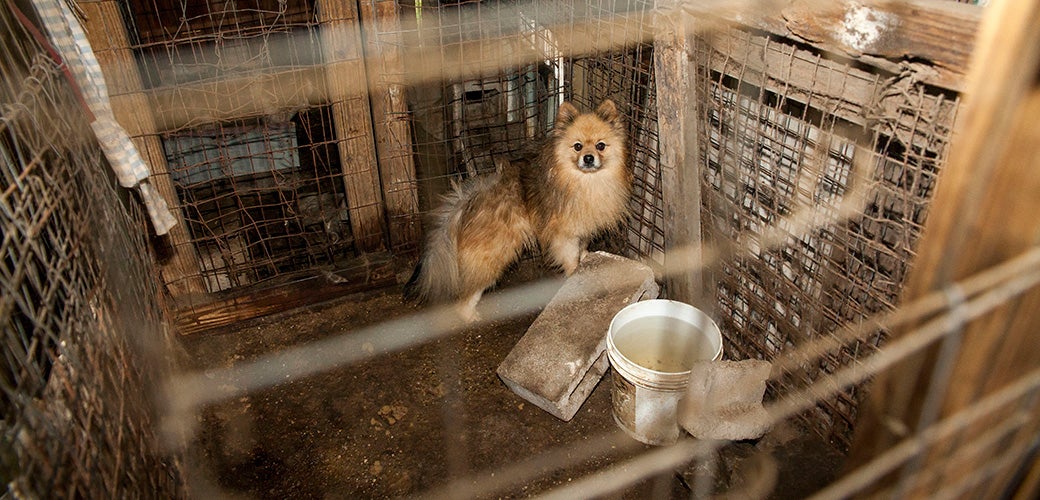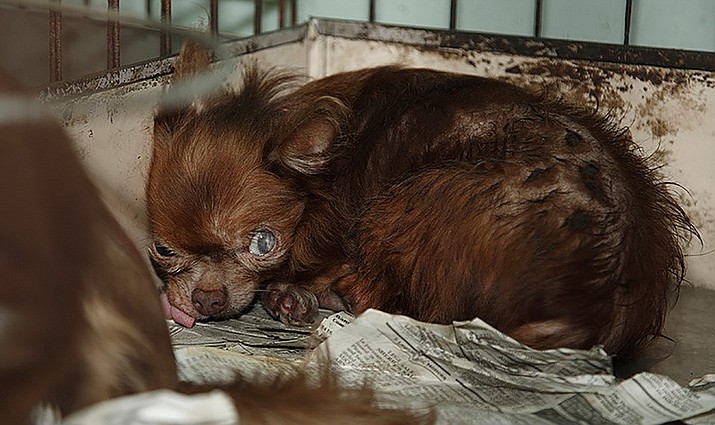An Inside Look at Puppy Mills: The Hundreds Hurt
September 17, 2020

Many of you out there may be familiar with puppy mills. For all of you who have no clue about the subject, puppy mills are companies composed of many facilities that work to breed dogs. Puppy mill facilities are located in the U.S, mainly in the west region, but why talk about this specific industry? One reason and only one, the mistreatment of dogs in their environment and concern for their health.
Puppy mills don’t have a good reputation, and that reputation won’t be helped after people see a single photo from “behind the scenes”. The people working at puppy mills have little to no care for the dogs in breeding. One organization, called Paws, described the puppy mill environment as “confined to squalid, overcrowded cages with minimal shelter from extreme weather and no choice but to sit and sleep in their own excrement.”

The Puppy Mill Project says that “breeding parents spend their lives in 24-hour confinement to cages. It is common to see wire cages stacked on top of each other. They generally do not have protection from heat, cold, or inclement weather. Dogs in puppy mills live in dirty, unsanitary conditions.” These descriptions are nothing like an average animal shelter, where they are cared for in much better conditions.
But that’s just the beginning, not only are the dogs mistreated in their surroundings, but they also suffer from poor treatment. Based on the Humane Society of The United States, “Due to poor sanitation, over breeding, and a lack of preventive veterinary care, the puppies from puppy mills frequently suffer from a variety of health issues, creating heartbreaking challenges for families who should be enjoying the delights of adopting a new family member.”
The mothers and fathers of the pups get very sick due to the filthy cages and tight spaces they live in, and their puppies get the diseases their parents had. Not getting any veterinarian check ups, they only get worse. Female dogs are bred over and over again to make as many puppies as possible, however, once they are no longer able to reproduce, they are likely to be killed.

But where do the puppies get sold? The breeders can sell them on the internet, but roughly 90 percent of dog stores get their dogs from puppy mills, as reported by Paws.
But there is another question… what about laws? The Federal Animal Welfare Act is for “…situations where animals are under human control. From pets to livestock to those locked in laboratory cages, animal welfare is the measure of how an animal is coping while under human control, and can also account for the way a wild animal is killed, for example during hunting,” says the Sentient Media. “According to the American Veterinary Medical Association (AVMA), welfare is supposed to ensure that an animal is safe, healthy, able to express natural behaviors, and is not experiencing physical or psychological discomfort (such as bodily pain or fear). Through veterinary and husbandry practices, these standards are meant to ensure animal health, appropriate sheltering, and humane management and killing.”
The USDA uses this act to help with the regulations of breeding and selling dogs when having a license to do so. There were once many inspectors that entered the facility and ended up renewing the breeder’s license, even though what puppy mills are doing goes against the Animal Welfare Act. But in early May of 2020, the USDA made a change in their rule.
Announced by The Humane World, “All dealers and exhibitors, including puppy breeders and roadside zoos, will now need to apply for a new license every three years, and pass a planned pre-license inspection to get one…. The rule also mandates that applicants must disclose any animal cruelty convictions before they can obtain a license.”
Hopefully, this new rule will help with the unfairness and mistreatment of the dogs in puppy mills. But why wait if you can also help with this cause? There are a few things you can do to help end puppy mills. First, if you want to bring in a new member to the family, don’t buy. Have you heard of the saying, “Don’t shop, adopt?” well, this is a huge reason why. Instead of buying your puppy, please go to shelters as an alternative, and if you really want to go online, make sure the breeder is not a member of a puppy mill.
A responsible breeder should let you see the puppy in person, show you around the area the mother or father of the pup lives, have close relations with a veterinarian or two, and make you write a contract that involves returning the puppy in case something goes wrong. You should also make sure that they do not always have puppies available, because this can show that they have been over breeding their dogs. If you don’t want to get a new member of the family, then spread the word. The more people who know about Puppy Mills, the more people will consider adopting rather than buying. Puppies in the store might seem lovely, but always remember, behind the curtains can be a different story.
Fiona Snashall • Sep 22, 2020 at 9:08 am
Never knew exactly what happened at puppy mills; very eye-opening article.
Rachel CG • Sep 21, 2020 at 8:55 am
That was a very interesting article, I thought I knew about puppy mills but this put a whole twist to the story. Thanks for bringing this to light!!
Luca • Mar 6, 2024 at 2:25 pm
I think that what all of these people are cruel for doing such a thing I think that we should help just seeing these pictures makes me cry of the conditions that these mothers are in and there babys being sold I think that it is so sad